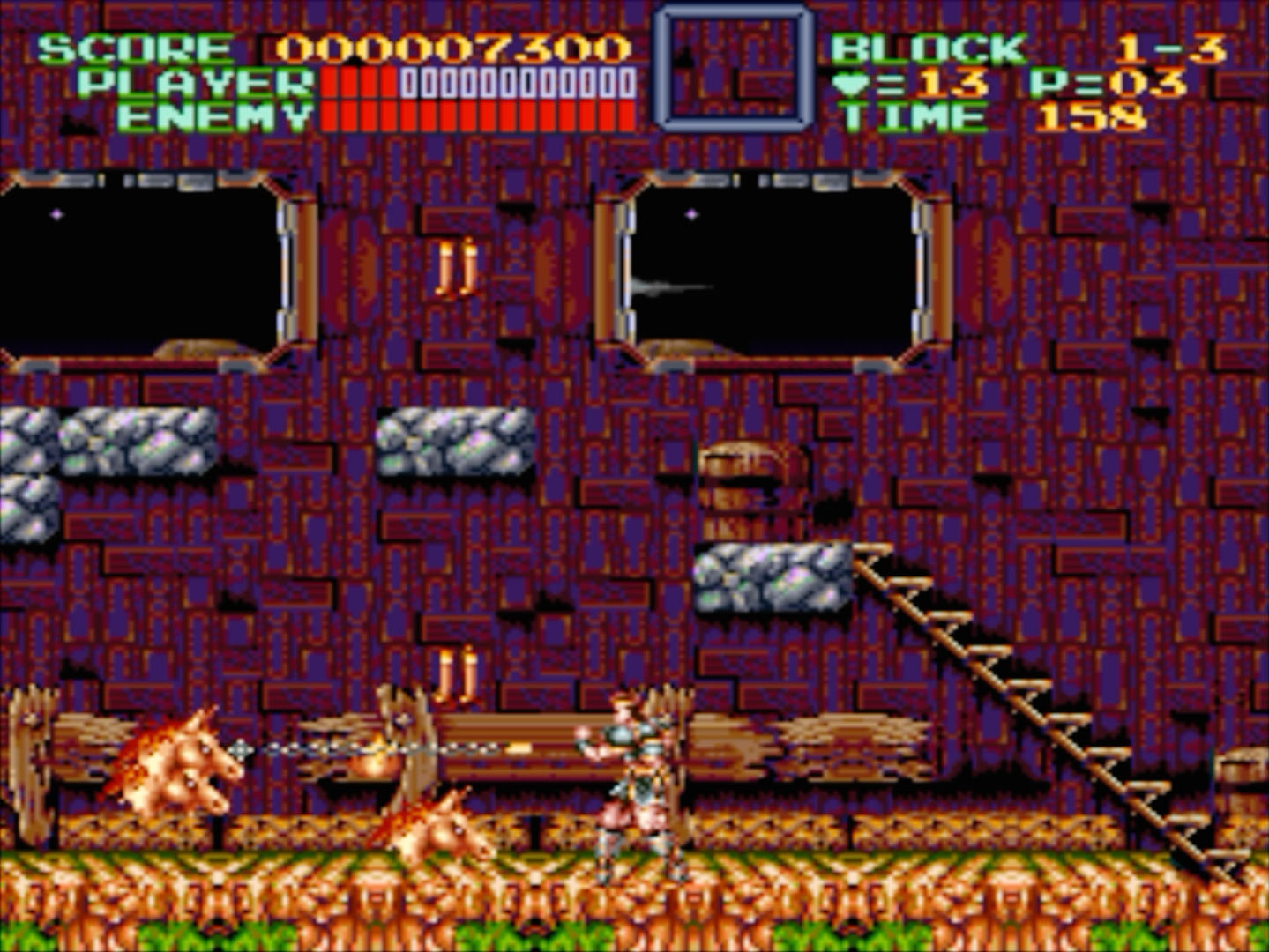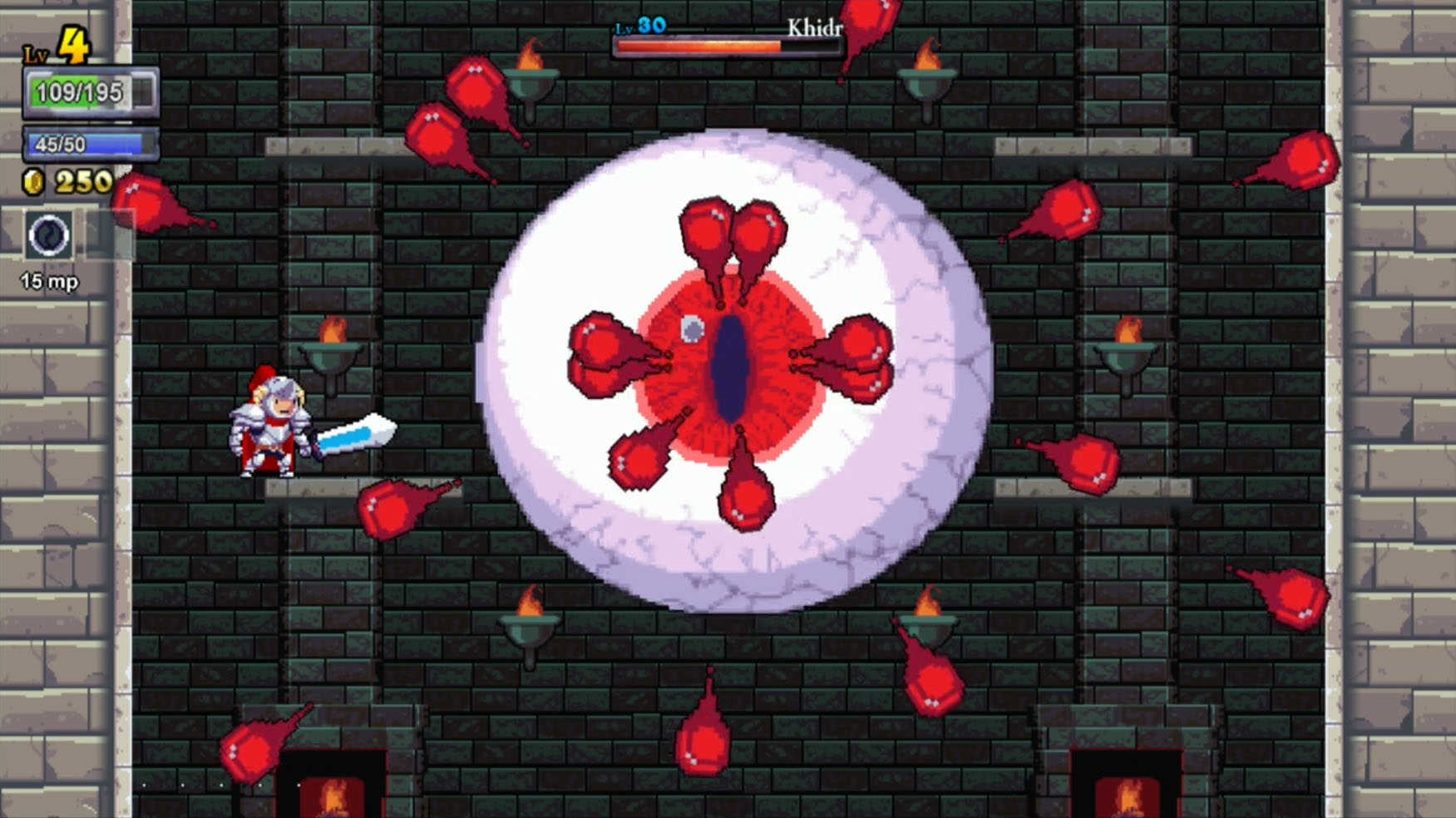DIY Super NES Classic #13: Super Castlevania IV / Rogue Legacy
By Christopher Gates Posted in Video Games on September 25, 2017 4 min read
So, you didn’t manage to snag a Super NES Classic. Yeah, neither did we. But instead of whining about it—okay, in addition to whining about it—we’ve decided to put together our own “DIY Super NES Classic” collection by replacing retro SNES titles with the best indie games we can find. It’s the next best thing to actually owning one!
The game: Rogue Legacy
Play it instead of: Super Castlevania IV
Why we chose it:
Surprise! Super Castlevania IV is not a so-called “metroidvania” game.
That was a surprise to me, at least. Of all of games on the Super NES Classic (aside from Star Fox 2, obviously), the only one that I’m sure I’ve never played before is Super Castlevania IV. In fact, I haven’t played much of any of the early Castlevania games. Like most people, I associate Castlevania with Symphony of the Night. I figured they’re all like that one, save for maybe the first game.
(If you don’t know what “metroidvania” means, don’t worry. We’ll get to that when we discuss an actual Metroid game.)

I still think that’s a reasonable assumption, but it’s wrong. Utterly and completely wrong. Super Castlevania IV is a standard action-platformer. Well, standard might be an overstatement. I’ve never played a game quite like this one. The hero, Simon Belmont, moves very slowly. His jumps oddly, hovering in the air mid-leap. Simon’s main weapon, a whip, has depth that I’m just starting to uncover.
Somehow, it works. Maybe it’s the atmosphere. Like many Castlevania games, Super Castlevania IV drops a member of the Belmont family into Dracula’s ultra-spooky castle castle. Like any respectable haunted palace, Dracula’s palace is chock full of monsters. You’ll find familiar faces from mythology and classic horror films, as well as spooks drawn directly from the game designers’ twisted imaginations. While most Super NES games are bright and colorful—developers loved that big color palette—Super Castlevania IV keeps things dark and earthy. It’s horror, not a cartoon.
I like monsters and I like killing monsters, so I enjoyed Super Castlevania IV just fine. But I had a slew of good metroidvania titles lined up as potential replacements, most of which I was excited to write about. As it turns out, none of those are going to work. Super Castlevania IV is full of atmosphere, but it’s also very, very traditional.
Ultimately, I think the closest parallel I can think of is Rogue Legacy. Like Super Castlevania IV, Rogue Legacy’s heroes (yes, there’s more than one) dive into a magic castle to fight nasty veasts. Rogue Legacy moves faster than Castlevania IV, but you’ll still spend most of your time jumping between platforms and dispatching the forces of evil.

Rogue Legacy looks more like a cartoon than Castlevania IV, however, and it embraces death in a way that Castlevania never does. See, Rogue Legacy is yet another roguelike. When you die—and you will die—the castle’s layout changes. Next time you head back in, it’ll look totally different. You have to start exploring again from scratch. Thankfully, while your character is gone for good, the money that he or she collected remains. You can use the cash to buy permanent upgrades, which help the adventurer’s descendants delve further into the castle’s depths.
In fact, the “legacy” part of Rogue Legacy might be what reminds of me of Castlevania the most. The Castlevania games tell one cohesive story, detailing the exploits of the cursed Belmont clan as they battle Dracula over and over. Similarly, in Rogue Legacy, every character you create descends from the ones that came before. Playing Rogue Legacy is kind of like cramming the tale of your own personal Belmont family into a single game.
Aside from that whip, anyway. Rogue Legacy has lots of cool things. A whip isn’t one of them.
Where to get it: Amazon ($16.99)